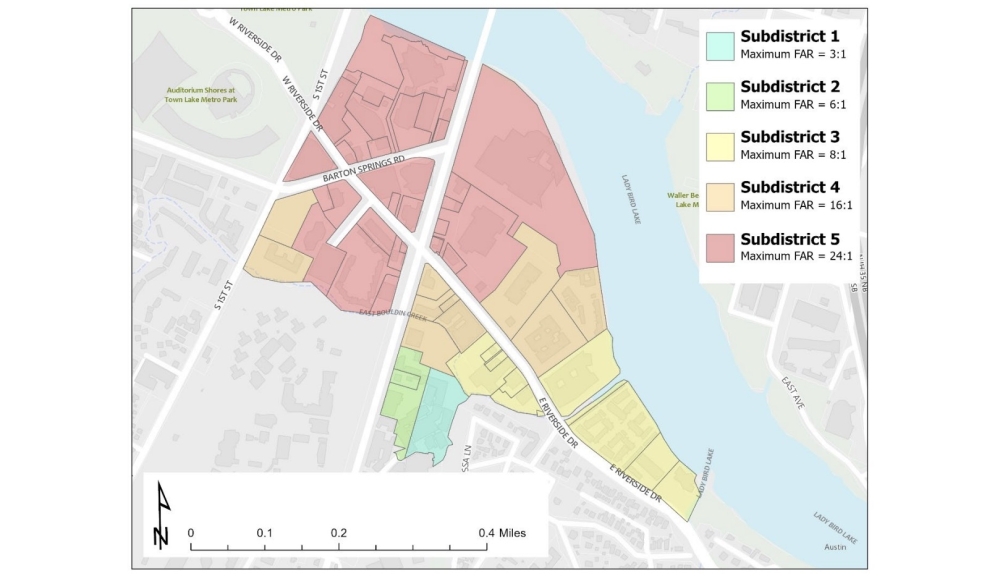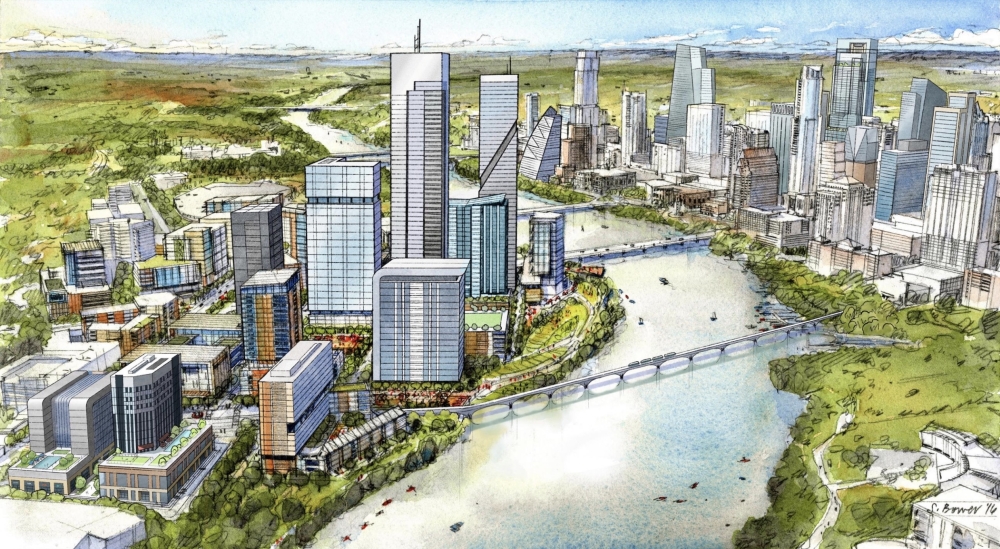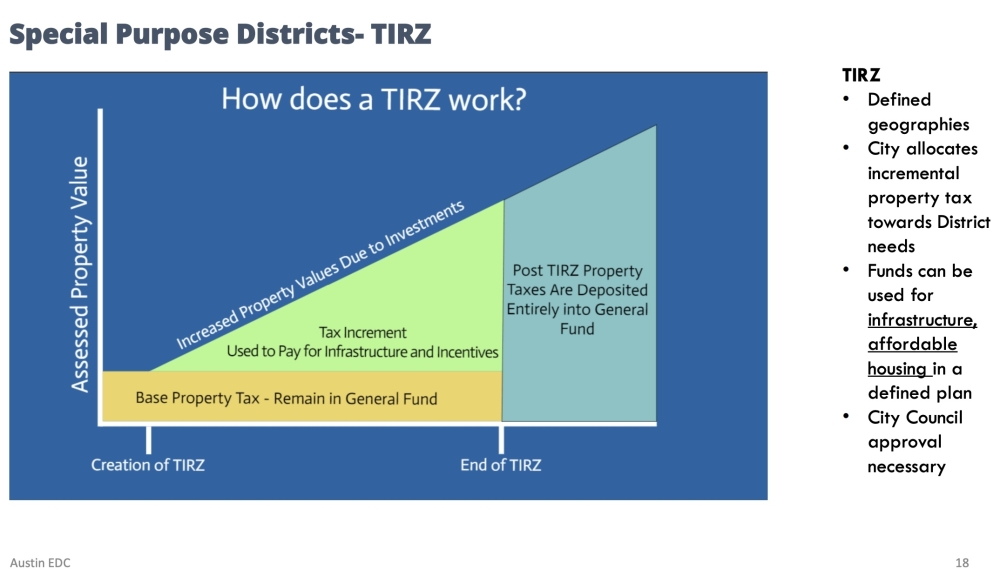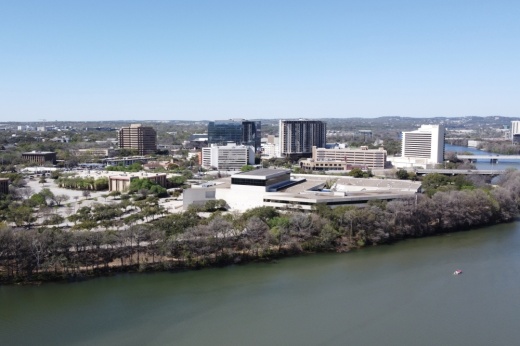The big picture
The 118-acre South Central Waterfront includes dozens of properties now home to an assortment of residences, offices and businesses situated east of South First Street, around East Riverside Drive and Lady Bird Lake.

A public process in the mid-2010s led to the creation of a "vision plan" for the area calling on Austin to implement rules that would encourage affordable housing, green space, walkable infrastructure and development, and other waterfront improvements as new towers rise in the district.
“If we do nothing, the development is coming anyway, and we’re going to get a bunch of one-off, parcel-by-parcel, piecemeal development,” then-Mayor Steve Adler said in 2016. “In the end, [without a plan], it’s very unlikely that is going to deliver great open spaces, connections, green streets; it’s very unlikely we get any affordable housing.”
However, it's taken the city years to establish any firm regulations based around that community vision—while several notable redevelopment proposals move closer to construction without such rules in place.
What's happening
Now, Austin is preparing to roll out those regulations after extensive review. City staff are considering a two-part approach:
- Establishing a local combining district
- Creating a new density bonus program for development

Additionally, building height wouldn't be capped anywhere in the district.
“The South Central Waterfront District represents a unique chance to build a destination in Central Austin that reflects the community at its best,” Planning Director Lauren Middleton-Pratt said in a Feb. 21 statement. “It will tie into the city’s culture, with connections to Lady Bird Lake and the hike and bike trail, views of downtown, and proximity to South Congress and Auditorium Shores.”

Austinites can weigh in on the framework until March 20 through a public survey available online, by emailing comments to city planners at [email protected], or at public meetings to be held in the coming weeks:
- Meeting 1: Online on Feb. 28 from 6-7:30 p.m. via Zoom
- Meeting 2: In person on March 18 from 6-8 p.m. at the Austin Public Library, 710 W. Cesar Chavez St., Austin
- Meeting 3: Online on March 20 from 10-11:30 a.m. via Zoom
Diving in deeper
With those planning efforts underway, a separate city financial strategy to update the South Central Waterfront is being challenged by residents in court.
In Texas, cities can use the tax increment reinvestment zone, or TIRZ, mechanism to reserve a portion of property taxes collected within a specified area to support local infrastructure.
When a TIRZ is created, a taxing baseline is set. Then, any future collections beyond that limit are reserved for the localized public improvements.

In 2021, City Council laid out a new TIRZ for the South Central Waterfront designed to capture a projected surge in tax revenue that will come with the multiple planned high-rises and other redevelopments there.
With that added revenue, the city expected to set aside more than $350 million over the next few decades for:
- Road and drainage updates
- Affordable housing
- Streetscape work
- Parks, trails and public plazas
- Water, electric and wastewater utility work
- Green infrastructure and reclaimed water updates
Those changes came alongside consideration of what was viewed as the district's landmark project, Endeavor Real Estate Group's transformation of the old Austin American-Statesman campus on the lakeshore. City officials cleared the zoning plan for that initiative in late 2022 alongside an update to the TIRZ.
Last spring, the groups Taxpayers Against Giveaways and the Save Our Springs Alliance, joined by former state Sen. Gonzalo Barrientos, former City Council member Ora Houston and resident Faye Holland, sued Austin officials over their TIRZ plan and sought to shut it down. Austin organizing groups Go Austin/Vamos Austin, and People in Defense of Earth and Her Resources joined the legal effort this month.
The plaintiffs say the South Central Waterfront TIRZ was improperly developed and illegal under state law, and that the taxing plan amounts to a giveaway to the private developers eyeing the area.
Lawyers for the plaintiff group and the city laid out their cases in a Travis County District Court hearing on Feb. 20.
What they’re saying
One of the opponents' main arguments centers on what is known as a "but for" determination—Austin's claim that privately funded growth wouldn't take place in the South Central Waterfront without city intervention.
The "but for" analysis refers to a piece of the state-mandated process for establishing a TIRZ. Under Chapter 311 of Texas tax code, cities must find that development "would not occur solely through private investment in the reasonably foreseeable future" without the taxing scheme in place.
Attorney Bill Bunch said Austin officials didn't follow state law when creating the TIRZ, given their focus on what he called "the most valuable developable land probably in the whole state."
“We respectfully submit that it stretches credulity to believe that the south shore of Lady Bird Lake is not going to develop unless we put our public tax dollars into it in the reasonable and foreseeable future. And in fact, the city doesn’t even dispute that. They’re reinterpreting statute," Bunch said.

"That’s what’s driving the increased value. It’s not the kickbacks of $354 million to help build essentially what’s the same street grid, same pipes," he said.
Attorneys also criticized the TIRZ plan for coming together after the district's first modern high-value project, the RiverSouth office tower, was already under construction.
City officials excluded that property from the final TIRZ boundary, which attorney Bill Aleshire said demonstrated the "arbitrariness" of City Council's determination of the outlook for new development.
Representing the city, attorney Hannah Vahl argued that Austin hadn't strayed from Texas guidelines in establishing the TIRZ. She likened the situation to cases of eminent domain acquisitions for the public good.
Vahl added that "unpleasant" characteristics of the South Central Waterfront today, such as inadequate street layouts and lighting, demonstrate the need for the civic reinvestment.
“That’s supported in the record by the vision plan, and it’s just a matter of common knowledge," she said.
Vahl also said Austin "absolutely" met the but-for requirement for TIRZ creation given the belief that increased development will take place with the zone-funded investments.
“There can be some amount of development happening, and it is a proper use of a TIRZ to speed up the pace of development. And that is shown through the statutory text," she said.
Following the February hearing, the parties now await a judgment in the days or weeks ahead.





